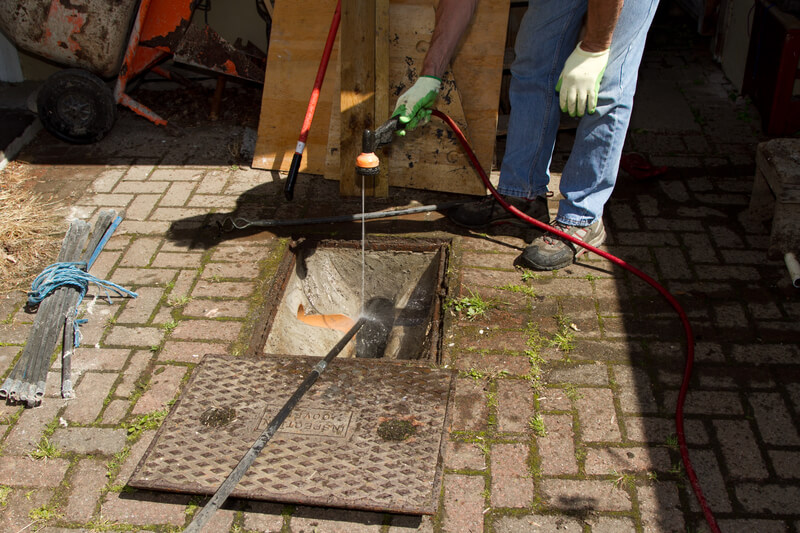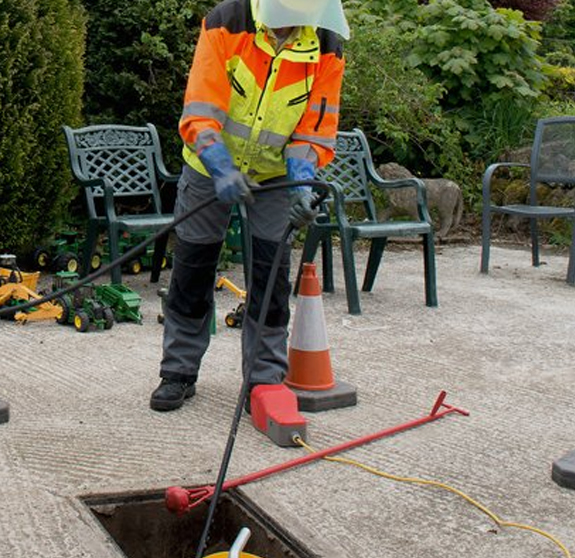Methods to Handle a Blocked Drain Prior to Calling in Experts
Methods to Handle a Blocked Drain Prior to Calling in Experts
Blog Article
Have you been looking for content around How to handle a clogged drain in your home?

Intro
Dealing with an obstructed drainpipe can be an irritating experience, interrupting daily tasks and possibly triggering damages to your building. Nevertheless, before connecting to pipes specialists, there are actions you can require to resolve the concern on your own. In this guide, we'll explore do it yourself services and safety nets to take on an obstructed drainpipe successfully.
Identifying the Problem
The first step in dealing with an obstructed drain is identifying the indications. Slow-moving water drainage, gurgling audios, foul odors emanating from drains pipes, or water backing up prevail indicators of a blocked drain. Recognizing these signs early can assist stop further problems.
Choosing the Right Pipes Service
When selecting a pipes service, consider aspects such as experience, licensing, and client reviews. Choose a reliable plumber with a record of quality handiwork and clear rates methods.
Expense Factors to consider
The expense of professional drainpipe cleaning company can vary depending on the seriousness of the clog and the plumbing technician's rates. Demand quotes from multiple suppliers and ask about any surcharges to guarantee openness and prevent shocks.
Security Measures
When attempting DIY drain cleaning, focus on safety. Wear safety gloves and eyeglasses to stay clear of contact with harmful chemicals or germs. Never mix different drain cleaning items, as this can create dangerous fumes.
Instance Studies
Real-life examples highlight the effectiveness of do it yourself services and the significance of timely expert intervention in dealing with drainpipe obstructions.
Typical Reasons For Blocked Drainpipes
Comprehending the variables that add to drain clogs is vital for efficient resolution. Usual culprits consist of hair, soap scum, grease, food debris, and international objects like sanitary items or paper towels. Tree roots invading underground pipelines can additionally trigger considerable obstructions.
Do it yourself Solutions
For small blockages, several DIY services can be efficient. Pouring boiling thin down the drain can assist liquify grease and debris. Baking soda and vinegar or a mixture of salt and cooking soft drink can function as all-natural cleansers. Utilizing a bettor or pipes snake to remove obstructions is an additional alternative.
Tools and Tools
Having the right devices on hand can make do it yourself drain cleansing more efficient. A bettor is a versatile tool for getting rid of obstructions in sinks, commodes, and showers. A pipes snake or auger can get to much deeper blockages, while drain cleaning chemicals can be utilized very carefully for persistent clogs.
Preventive Measures
To stay clear of future clogs, adopting safety nets is vital. Mount drainpipe guards or strainers to catch hair and debris prior to they get in the pipes. Frequently flush drains with hot water to dissolve oil build-up, and prevent disposing of grease or solid waste down the drain.
When to Call an Expert
While do it yourself services can settle minor clogs, specific signs suggest the demand for specialist support. Persistent blockages, foul odors despite cleaning up efforts, or numerous drains backing up concurrently are warnings that necessitate skilled intervention.
Conclusion
By complying with the suggestions described in this overview, you can properly deal with obstructed drains and protect against future pipes concerns. Whether going with do it yourself options or looking for professional support, timely activity is crucial to preserving a healthy and balanced plumbing system and protecting the honesty of your home.
How to Clear a Clogged Drain Yourself (And When to Call In the Professionals)
What Can Clog a Drain
Dirt Skin flakes Hair Grease Soap scum Food Offset pipes Tree roots Small objects Mineral buildup DIY Tricks to Unclog a Drain
You can fix this! Once you have identified the source of the clog (or have a vague idea), you can try one or a combination of these fixes in order to clear your plumbing.
Wire Hanger or Snake
Untangle and clear out hair from a drainpipe with a homemade snake. Use a straightened-out wire hanger with a 90-degree angle hook to locate the clog and drag out any unwanted material.
Remember not to push the clog further down to where the wire hanger cannot reach! If you need to follow up with a plunger, give it a try. Your efforts might be more successful after it’s been wire-snaked.
If you want to get fancy and don’t have a wire hanger to spare, head to the store and pick up a hand-operated drain snake. You can get one for $10-$30. It may save you the hassle, and provide additional length to reach deep into the clogged pipe.
Plunger
A cup plunger has a suction cup attached to a wooden handle. The rubber creates a seal around the drain, and increases the pressure force of the plunger.
Plunge for 30-second increments to loosen the clog. This may need to be repeated over the course of 15-20 minutes. Once plunged, run the water to flush the remaining material out of the drain.
Remember– never use a plunger if you have used a chemical drain cleaner. These chemicals can splash up from the force of the plunger and cause serious injury or burns.
Boiling Water
Hot water can sometimes break up materials into a flushable amount. Dirt, grease, and soap buildup requires heat in order to unstick from surfaces.
Take your kitchen kettle and heat your water to a boil. Once it reaches a rolling boil, pour it directly down the drain into the blockage. Carefully follow with plunging, if necessary.
Don’t worry if this takes more than one try! It can often take multiple kettles and repeated plunging in order to clear a particularly stubborn clog.
Chemical Drain Cleaner
As a last resort, pick up a bottle of chemical drain cleaner. Drain-cleaning chemicals are potent, and not very good for the environment.
You may need to wear protective eyewear in gloves before handling your bottle of chemical drain cleaner. Follow the instructions printed on the bottle, and flush with water as soon as the instructions allow. Do not follow with plunging.
Baking Soda and Vinegar
As a safer alternative to chemical drain cleaner, baking soda and vinegar can create a chemical reaction that clears tough clogs.
Combine one cup of cleaning vinegar with one cup of boiling water, and set aside. Once you have done this, pour half a cup of baking soda down the drain. Give the baking thirty seconds to settle and cover a large portion of the problem drain.
Following the baking soda, pour down your vinegar and hot water solution. Once the vinegar and baking soda combine, the mixture will bubble and fix. Let this reaction fizzle in the drain for about an hour.
After an hour, follow with a kettle’s worth of hot water. The heat and liquid should flush out any remaining material.
When to Call a Plumber
If your DIY attempts haven’t cleared your clog drain, it’s time to call in a professional. It’s not worth losing access to your kitchen sink or high-traffic bathroom. A clog in a vital area can keep you from the things you’d rather be doing, and derail your routine.
Anytime a clog is causing water to spread is a time to call in a plumbing service. What starts out as a little bit of water can quickly grow into serious, expensive water damage.
Additionally, a serious clog can result in burst pipes or serious leaks. Make sure you know when to take it seriously!
https://myguysnow.com/how-to-clear-a-clogged-drain-yourself-and-when-to-call-in-the-professionals/

Do you like reading up on Tips for Dealing with Clogged Drains and Sewer Lines? Give feedback down the page. We will be happy to listen to your thinking about this post. We hope that you come back again soon. So long as you liked our article please be sure to pass it around. Thanks a lot for being here. Please visit our blog back soon.
Instant Quote Report this page